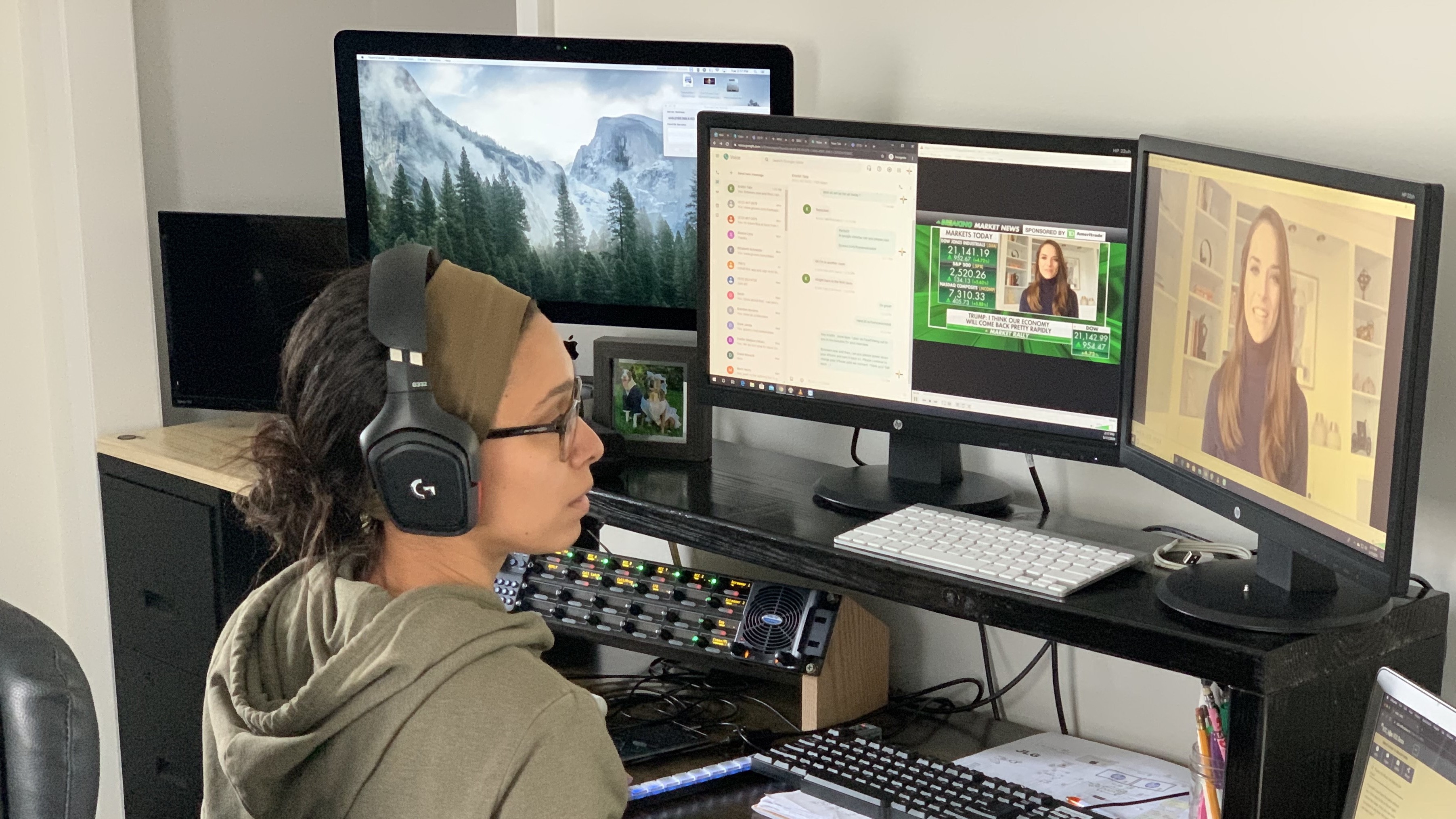Broadcasting Via Smartphone: Some Tips & Techniques
Video Call Center shares thoughts on how to look your best on air

As the quality of smartphone cameras has improved over the years, many people are now using them to broadcast from their homes or facilities, especially during a time when our mobility is limited. The Video Call Center, a provider of video remotes and production automation for media companies, is among the most experienced in advancing remote production technologies using smartphones.
The company’s patented technology allows seamless connectivity for broadcasting over cellular connections with zero latency. No apps are involved; all that’s needed is a smartphone camera and cellular connection.
Larry Thaler, CEO for The Video Call Center and contributor to TV Technology, said the company was seeing steady growth well before the pandemic.
“We have watched our new, location-agnostic, smartphone- and IP-based production processes steadily gain traction over the past couple of years with sales up nearly 100%,” he said. “Even before the pandemic, our clients found that we offered creative flexibility, while making more effective use of their available budgets. Although we are concerned about the pandemic and our hearts go out to those affected, the VCC's customer base has grown by an additional 30% and production hours are four times higher than this time last year.”
TV Technology recently spoke with VCC Producer Jonni-Lynn Galietti about her work in helping prepare clients for their live appearances on TV.
TVT: What’s the first thing you do to help prepare for broadcasts?
Jonni-Lynn Galietti: The first thing we do when we connect with the smartphone is we analyze the connection. Sometimes Wi-Fi is great, but sometimes it's not, so we would have to switch to data—so there’s really only two options.
It’s really easy to analyze the connection—within the first 10-20 seconds of our conversation, we can see if it’s good or bad. After that, it’s all about propping up the device. We ask them to hold it full screen horizontal and then we really analyze the room. If the first thing I see is light behind the caller, I know that there's some beautiful natural light coming into the room. But the last thing I want to do is to put it behind the caller.
So we utilize anything we can to have that caller move to use that light, so that the light is in front of them. Window sills are great, as they can prop the device so it’s at 90 degrees. But the real challenge is getting it eye level, so we’ll ask them to use ordinary household items to prop these devices to get them at eye level with the caller. We don’t want any tilts or look up somebody's nose and we don't want any ceiling in the shot, so there's a lot of filters that we really have to go through to get that perfect ideal shot.
If I have my overhead light on in the room I’m using, it’s not really going to provide a balanced light on my face. What matters most is that the person you are speaking with, that their face is lit up. It’s not the overhead, the shoulders or behind them, you want to see their face clearly.
TVT: How far away should the smartphone be placed?
JG: That's really at the client's request. I've had clients connect with callers at campsites where they want the full body shot, tent and fire in the picture, but the majority of our clients want to match up the caller to the host that is interviewing them.
It's usually the eyes, and the top part of their chest, maybe a little more headroom, but it’s really based on the client's request.
TVT: Do clients ever want to use the camera vertically?
JG: We've had requests to do it vertically before but we really like to provide horizontal connections because we want the caller to see as much return as possible. I think it's just as important for the full screen to be taken up in the control room so they can crop it accordingly.
TVT: How long does setup take?
JG: This window varies. A lot of our clients put very strict time constrictions on us—we've had less than seven minutes to connect with the caller to put them on live TV. We’ve had callers in Israel with absolutely no connection and we needed to provide a clear HD signal and we spent hours connecting them to see what the best results were.
As a rule of thumb, we typically ask for 15 minutes just to get it perfect. We know everyone's time is valuable but we feel confident that we can get a really good signal within 15 minutes.
PLUS: So, You're Anchoring the News from Home...
TVT: Beyond the tech support, how would you describe your role?
JG: I am their cheerleader! There's a lot of people who get nervous about how they look, but I'm only here to make sure your connection is good and your shot looks good. I'm also here to amp you up.
There's different challenges every time. Everyone is unique.
Get the TV Tech Newsletter
The professional video industry's #1 source for news, trends and product and tech information. Sign up below.
Tom has covered the broadcast technology market for the past 25 years, including three years handling member communications for the National Association of Broadcasters followed by a year as editor of Video Technology News and DTV Business executive newsletters for Phillips Publishing. In 1999 he launched digitalbroadcasting.com for internet B2B portal Verticalnet. He is also a charter member of the CTA's Academy of Digital TV Pioneers. Since 2001, he has been editor-in-chief of TV Tech (www.tvtech.com), the leading source of news and information on broadcast and related media technology and is a frequent contributor and moderator to the brand’s Tech Leadership events.

